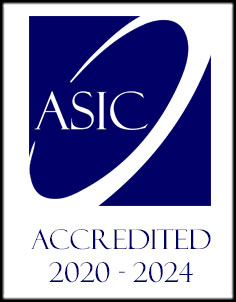Course Overview
Human trafficking is a $150-billion-a-year industry and is the world's fastest growing criminal enterprise, with an estimated 27 million victims. Tackling human trafficking has become a critical focus of the international community, as the UN Post-2015 Development Agenda has called for action to be taken urgently to "end modern slavery and human trafficking".
This course will provide those involved in investigating, preventing and mitigating the effects of human trafficking with a clear understanding of its nature, evolution and drivers, as well as the tools to tackle the crisis.
Interactive learning will support participants’ understanding of the key issues surrounding human trafficking, such as the relationship with other criminal activity, the treatment of survivors and international agreements. By examining best practice case studies and anti-trafficking policy, participants will leave equipped to assess anti-trafficking strategies and investigations, and implement action plans to tackle the crime, whilst engaging a broad range of stakeholders.
A comprehensive analysis of the tools to counter human trafficking will be provided, with subjects to be discussed including:
- The economics of human trafficking
- The crux of the trafficking issue and policy impacts
- The immigration/asylum debate and impact on policy
- Gender and human trafficking
- Public awareness campaigns
- Supporting victims of human trafficking
Experts in the field will lead this training through interactive workshops, lectures and best practice case studies, fostering innovation, creative learning and networking amongst peers.
Learning Outcomes
By the end of the course the delegates will be able to:
- Assess and formulate action plans
- Lead effective organisational change
- Apply the key principles of anti-trafficking mechanisms to their organisation
- Improve capacity and support structures, whilst reducing administrative burdens
- Analyse, enhance and evaluate performance
- Deliver services that better meet stakeholder needs
Agenda
Day One
- Definitions: The movement, the control and the purpose of human trafficking. The cross border and domestic nature of human trafficking.
- - Who is being trafficked?
- - What is the scale?
- - Forms of exploitation
- - Is there a universal consensus around human trafficking? Palermo Protocol 2003 – it's impacts and limitations UNGIFT
- - The UN's Post-2015 goals and the role of human trafficking Regional Policy: The Council of Europe and EU Directive against Trafficking in Human Beings and the African.
- - The profitability of human trafficking
- - The economics behind vulnerability to trafficking
- - What are the costs of human trafficking?
- - The demand for cheap labour creating the market for traffickers
- - Organised crime engagement in human trafficking
- - Different levels and types of organisation require different responses
- - Organised crime networks exploiting weak systems and conflict
Day Two
- - Lack of training and thus lack of understanding as a reason for limited criminal justice action and success
- - Unpacking elements of human trafficking to aid investigations
- - Typology of Modern Slavery Offences
- - Police responses to modern slavery: re-active, pro-active, disruptive
- - Building knowledge and expanding capacity
- - Victim-centred investigations
- - Why a holistic response is needed?
- - Benefits of partnership working
- - Stakeholders for: prevention
- - What to measure
- - Possible indicators
- - Monitoring and evaluating outcomes and impact not just outputs
Day Three
- - Difficulties of identifying victims
- - Role of key agencies in identifying and referring victims
- - Borders as sites of prevention
- - Who delivers public awareness on human trafficking
- - How effective are public awareness campaigns/events
- - Different kinds of public awareness campaigns
- - The role of the media and the new role for social media
- - The role of business practices in facilitating human trafficking and forced labour
- - Legislation to address human trafficking and modern slavery in supply chains
- - The Modern Slavery Act
- - Examples of Business Responses
- - Use of Government procurement to prompt change
- - Future challenges


What Learners Say
LBHF
“ Very useful materials and practical case studies to test knowledge and understanding. The virtual training is easy to access each day. Good amount of interactive studies and comfort breaks. I have never attended an internally run course before and I have found it extremely beneficial to be learning alongside delegates from other countries also working in the realm of Human Trafficking and Modern Slavery. “